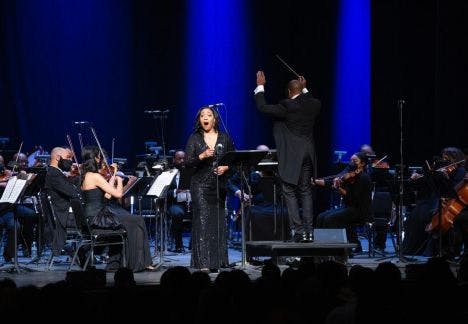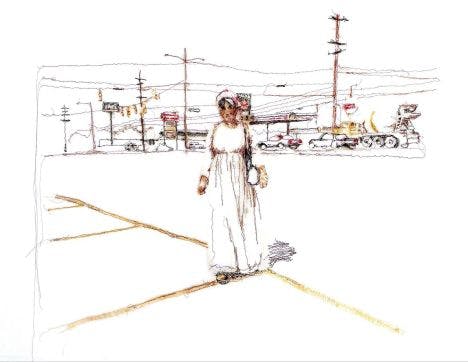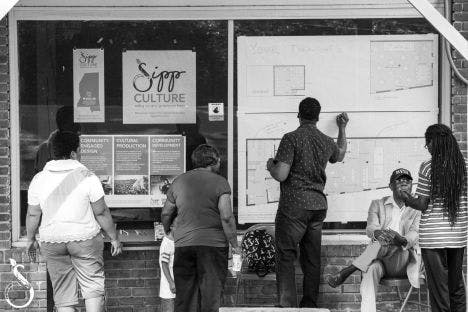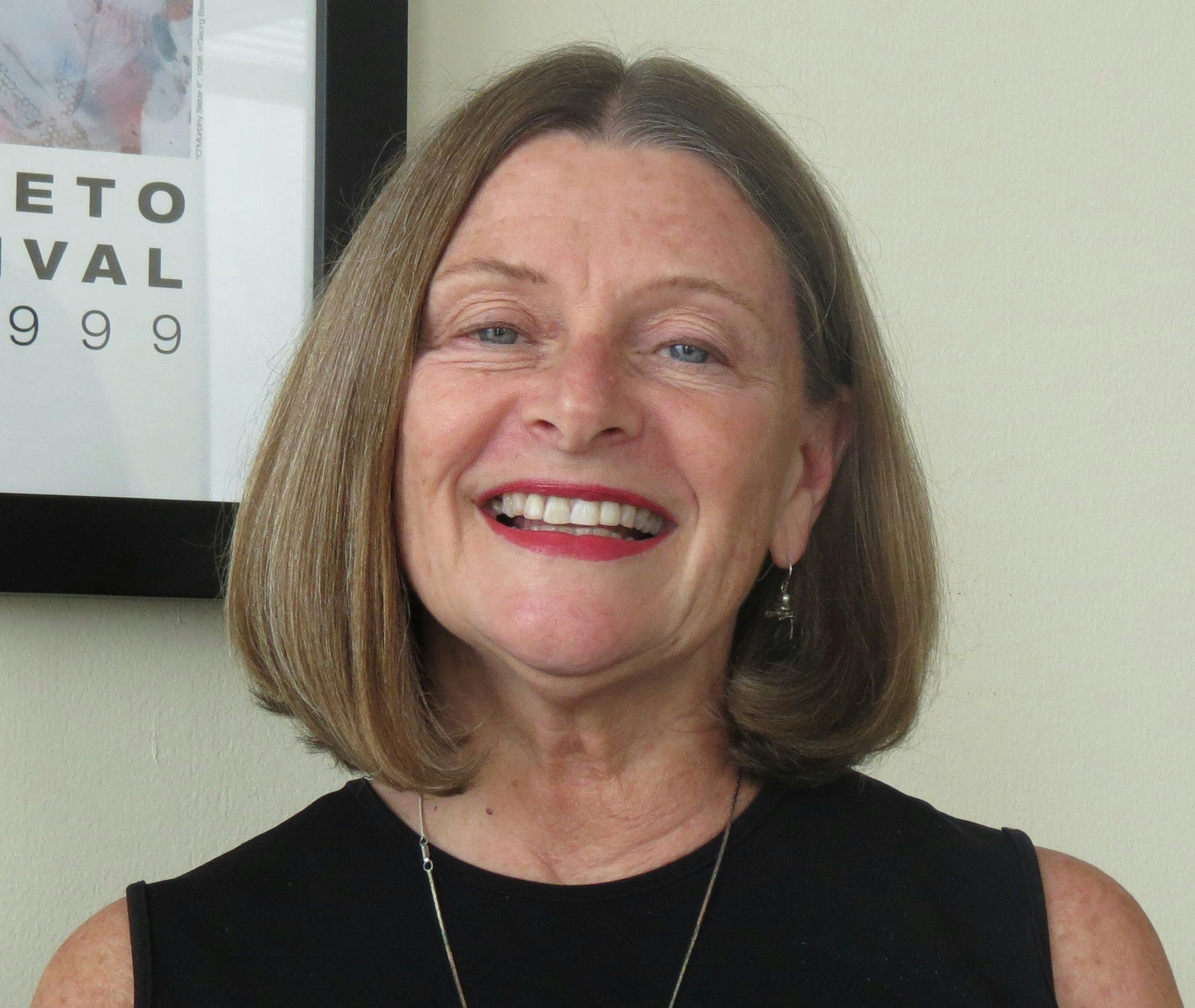Arts Funding, as Seen from the South
Susie Surkamer
Colour of Music, Inc., a Southern Cultural Treasures grantee. Photo Credit: Jason Cohn.

“A great nation deserves great art.” This was the thinking that led to the founding of the National Endowment for the Arts back in 1965. Though many people don’t know it, over the past fifty years a handful of regional arts organizations have helped this federal agency work toward its mission. These six Regional Arts Organizations cultivate and invest in the unique cultural assets of each of the regions across our vast country, but more dedicated efforts and support are needed.
South Arts, originally the Southern Arts Federation when it was incorporated in 1975, joins Arts Midwest, Mid Atlantic Arts, Mid-America Arts Alliance, the New England Foundation for the Arts, and WESTAF to make up the US Regional Arts Organizations (RAO). As an intermediary between the NEA and the state arts agencies in their respective regions, each RAO serves as an independent nonprofit, addressing the various needs of their communities, from supporting individual artists, to improving cultural infrastructure, to establishing partnerships with philanthropies and funders of all sizes.
A great nation deserves great art. This is what that looks like from the South.

A Growing Region
The South’s region, according to the Census Bureau, is now home to the largest population and is also the fastest growing part of the country. Ask anyone in our nine-state direct service area (Alabama, Florida, Georgia, Kentucky, Louisiana, Mississippi, North Carolina, South Carolina, and Tennessee) and they will tell you that they have seen many people move to their town, city, county, or state during the pandemic. And much of the migration we are seeing to the region is not just from within other parts of the United States—it’s coming from immigration that continues to enrich our cultural diversity.
What does migration mean for culture? This isn’t the first time that people have moved from one region to another; periods such as the Great Migration are particularly significant in the history of the South and our nation as Black people brought their traditions, culture, and art up the Mississippi and across the United States. As those from our region migrated, they brought with them the arts, cultures, and ideas that are now seen as quintessential American forms: jazz, blues, Southern gothic literature, foodways, and other key touchstones from our region have become key to America’s cultural identity.
World-Class Art in Unexpected Places
While the South has always had an abundance of homegrown creativity and culture, we are seeing art outside of the region’s established capitals, such as Memphis, Nashville, and New Orleans. Through our Jazz Road initiative—which directly funds jazz artists’ tours across the nation—we’ve worked with revitalized jazz clubs in places like Birmingham, AL and Durham, NC. These new and expanded venues and festivals provide an opportunity for cross-pollination between local and touring artists.
When recently speaking with our board of directors at their meeting in Charleston, SC during the Spoleto Festival, the jazz critic and curator Larry Blumenfeld shared that, “While we always used to measure culture solely in terms of New York and the major cultural institutions on both coasts (and maybe DC or Chicago), that landscape has changed. Those power centers no longer occupy the same space, especially since COVID and especially for anyone under 40. And this is a moment when the South, which has always been a source, especially for music, can be a renewed center for artist development, outreach and thinking about arts.”
A prime example of this trend in the visual arts is ArtFields, which annually showcases up to 400 works of art from Southern artists in the rural town of Lake City, South Carolina. Beginning in 2013, thousands of visitors travel to Lake City every year to see art by some of the South’s leading artists. Its mission: to “celebrate Southern art and revitalize our small town through the arts.”
This fall, South Arts is proud to partner with ArtFields on Southern Voices/Global Visions, an exhibition of works by artists who are previous award recipients of the ArtFields Competition and South Art’s Southern Prize and State Fellowships for Visual Arts since it began in 2017. The exhibition, occupying over 32,000 square feet of gallery and renovated warehouse spaces, is one of the largest exhibitions of Southern contemporary art in recent memory. It opens September 23 and runs all fall. You should come visit.

Access and Equity
Access to cultural opportunities is essential to our mission of advancing Southern vitality. While South Arts embraces an equity lens across all our programs, we also have several programs with a particular equity focus, such as the National Leaders of Color Fellowship network (which is a partnership of all the RAOs) and Southern Cultural Treasures (SCT), a multi-year program through which 17 BIPOC (Black, Indigenous, People of Color) led and serving organizations receive unrestricted operating grants and capacity building support.
The organizations in the SCT cohort do a variety of things—they are producing theaters, museums, and touring companies, for example. Many are found in the South’s major cities, but others are in rural areas. One, for example, is in a town in Mississippi with a population of less than 5,000 people. This organization—Sipp Culture—utilizes food, personal and community narrative, and a generative collective history of place to advance comprehensive community cultural development to reimagine a 21st Century rural infrastructure based on principles of self-determination, production, and sustainability. This work could not happen in a large city, in the South or elsewhere, and that’s part of what makes it so special.
The SCT initiative helps each of the 17 organizations reach self-defined success, as they know best what they need to do. Ultimately, 14 funders including the Ford Foundation, our first partner for this project, contributed $6.7 million over three years to make this happen. When you look at overlap between culture and social activism in the South over the years, centering access and equity becomes all the more important.
Investments Go Further
And yet, for all that the South has contributed culturally over the history of the country, our arts sector has been traditionally under-funded compared to other parts of the country. This is both an internal and an external problem. National funders don’t tend to look here, and five of our nine member states allocate less than $1 per capita to public arts funding. Most of the foundations in the South have a local service area, so despite the impact of and need for regional initiatives, there are few ways to fund them. Additionally, few national foundations, especially those with a focus on supporting the arts, are based in the South.
Investments in Southern art and culture have been and continue to be greatly needed. Many of the organizations in the South are grassroots and small and are now facing the challenge of serving larger and more diverse communities. Individual artists have few places to turn for support, and when there’s a crisis, they find themselves in precarious circumstances.
But, there is tremendous opportunity for growth. And coupled with the growing understanding that Southern artists and organizations are doing world-class work, we believe that the region has limitless potential. From gospel to gumbo to Southern Gothic, time and again the South has influenced the culture of the entire country. So while yes, a great nation deserves great art, most great art doesn’t just appear on a national level. Its support requires a closer, regional nurturing of the individuals and communities who make it happen.
